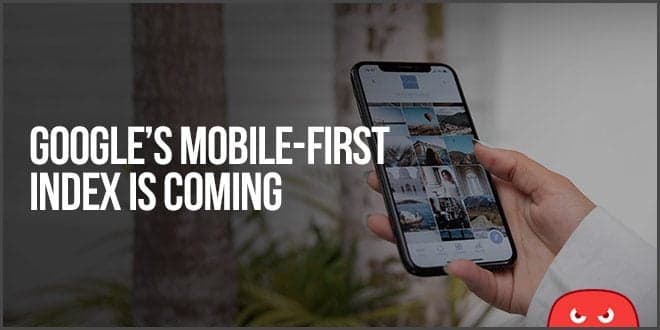
Mobile-first indexing has been lingering all year since Google announced in March it would only use the smartphone Googlebot for indexing.
What does this mean for your site? Basically, if your site is desktop-only it will no longer be seen in search. This includes content like comments, data, images, videos, or anything else you want indexed.
Although the original switch was scheduled for September 2020, Google developers never expected a global pandemic to impact businesses. In some cases, the virus has delayed older websites moving to mobile.
They’ve now indicated that this huge switch will happen in March 2021.
John Mueller, Google Developer Advocate, said earlier this year that 70% of sites shown in search results have already shifted over. But, if you’re not one of these sites, you have some work to do.
What can you do to make sure this change won’t destroy your online presence? Keep reading below to learn how you can prepare.
What Happens in March 2021 Exactly?
The switch will happen rapidly but not overnight. Mueller explained that there will be an increase in Googlebot crawling after switching to mobile-first. The change will take some time and he said it could take longer depending on the size of your domain. “Afterwards, we’ll still occasionally crawl with the traditional desktop Googlebot, but most crawling for search will be done with our mobile smartphone user-agent,” he said. This change is also concerning for mobile sites set up as a m-dot version. After the update they’ll only be able to link m-dot sites to desktop, which could result in dropped content if you aren’t redirecting desktop users. It’s more likely to happen with sites using hreflang attributes. In fact, Google developers are recommending that sites no longer use m-dot because of the confusion between search engines and users.Preparing Your Site for Mobile First Indexing
We understand that the big question on your mind is how can you protect your website going into March 2021? Pat yourself on the back if you’re one of those sites who already set up mobile capabilities, otherwise take a deep breath and get to work. First, you’re able to check the status of your mobile-first indexing in the Google Search Console. Another way is to use the URL Inspection Tool. Either one can help you tell where you’re at in the process. Here are some mobile-first indexing best practices directly from Google:- Use the same meta robots tags on mobile and desktop
- Don't lazy-load primary content upon user interaction
- Don’t block URLs from crawling
- Use the same content on your mobile and desktop site (especially clear headlines)
- Have the same structured data (bread crumb, product, video object, etc.) on both versions of your site
- Make sure your ads are also placing on mobile
- Follow the best practices for images (high-quality images, supported formats, and alt-text)
- Place videos in supported formats at easy-to-find spots on your site
Don’t Panic About Mobile-First Indexing
This announcement from Google seems scary for businesses running older websites without a mobile component, but there’s plenty of time to update and optimize websites before March 2021. Follow some of the best practices we listed above when working on your site. You may consider hiring a professional web designer to help if you don’t have someone on staff to do it. Are you in the middle of updating your site and need help with web copy? We can help you to write SEO-optimized, conversion-focused copy that represents your brand and builds trust with visitors. We’ll ensure that the copy for both your desktop and mobile site is the best it can be. Reach out today to discuss your site and what can be done to prepare for the next Google update.The author
null null
description
Discussion
Comments
Arsha K
January 11th, 2024
very informative
Aneesh A
August 7th, 2023
Thank you.
Shalushaan
July 26th, 2022
Thank you for sharing this information
